The Arctic—While the Ice Is Melting
Nordiska Museet, Stockholm, Sweden, 2019
Under the bright light of the North Star, where meridians meet and time zones come to an end—this is where the Arctic begins. Home to four million people who have for thousands of years lived with the ice.
The Nordiska Museet's Great Hall has been given over to the life and changing conditions of the Arctic region. In The Arctic—While the Ice Is Melting, visitors encounter the history and future of the ice and the people that live in one of the regions of the world where climate change is most noticeable.
The exhibition is the result of close collaboration between the studio, Nordiska Museet and 40 researchers and experts from around the polar area. The exhibition will run for approximately three years, and there will be an extensive program of seminars and workshops for the public.
Size: 1500m2
MUSEEA’s Role: Exhibition Design, Graphic Design
︎
Nordiska Museet, Stockholm, Sweden, 2019
Under the bright light of the North Star, where meridians meet and time zones come to an end—this is where the Arctic begins. Home to four million people who have for thousands of years lived with the ice.
The Nordiska Museet's Great Hall has been given over to the life and changing conditions of the Arctic region. In The Arctic—While the Ice Is Melting, visitors encounter the history and future of the ice and the people that live in one of the regions of the world where climate change is most noticeable.
The exhibition is the result of close collaboration between the studio, Nordiska Museet and 40 researchers and experts from around the polar area. The exhibition will run for approximately three years, and there will be an extensive program of seminars and workshops for the public.
Size: 1500m2
MUSEEA’s Role: Exhibition Design, Graphic Design
︎

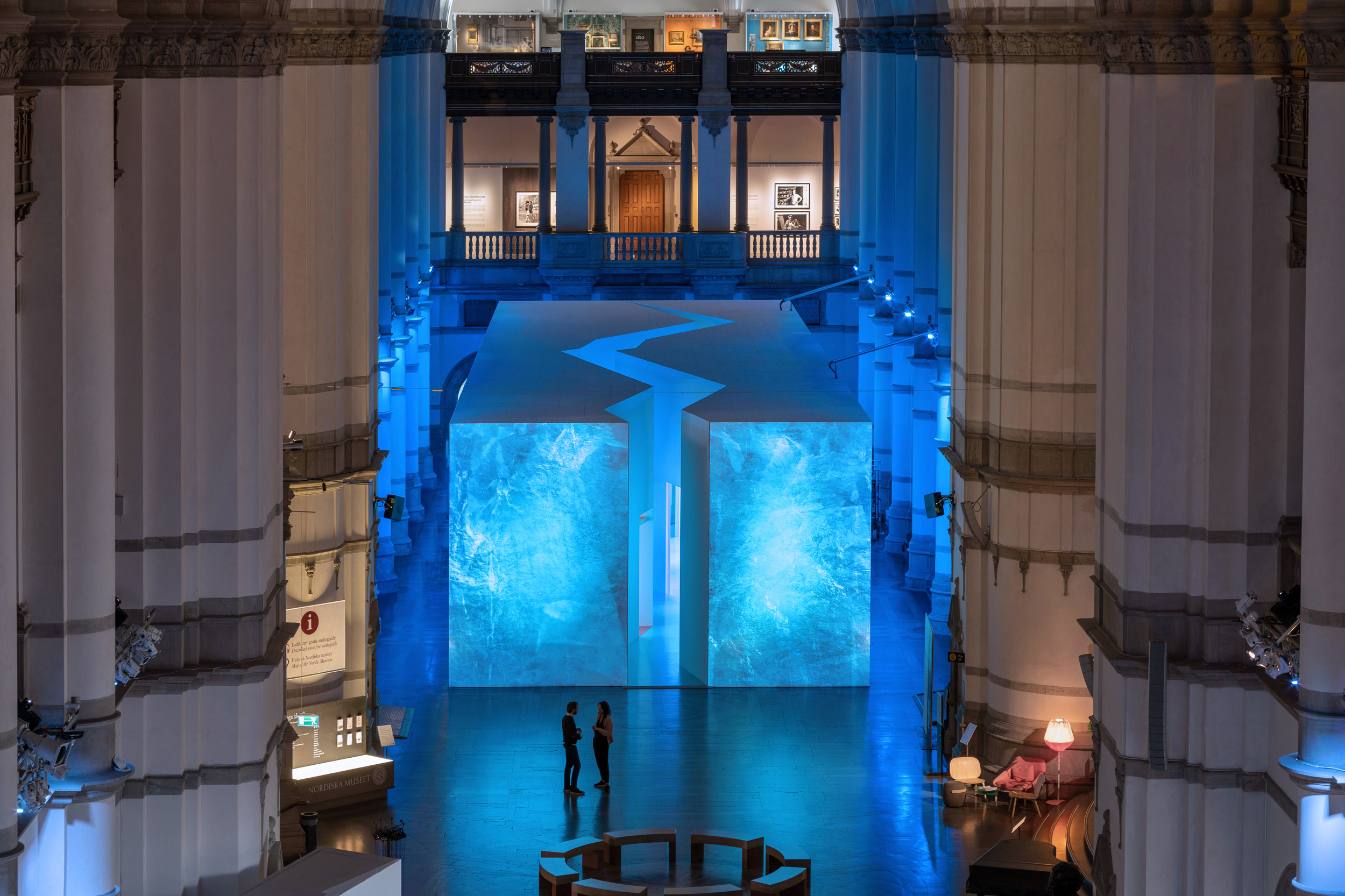
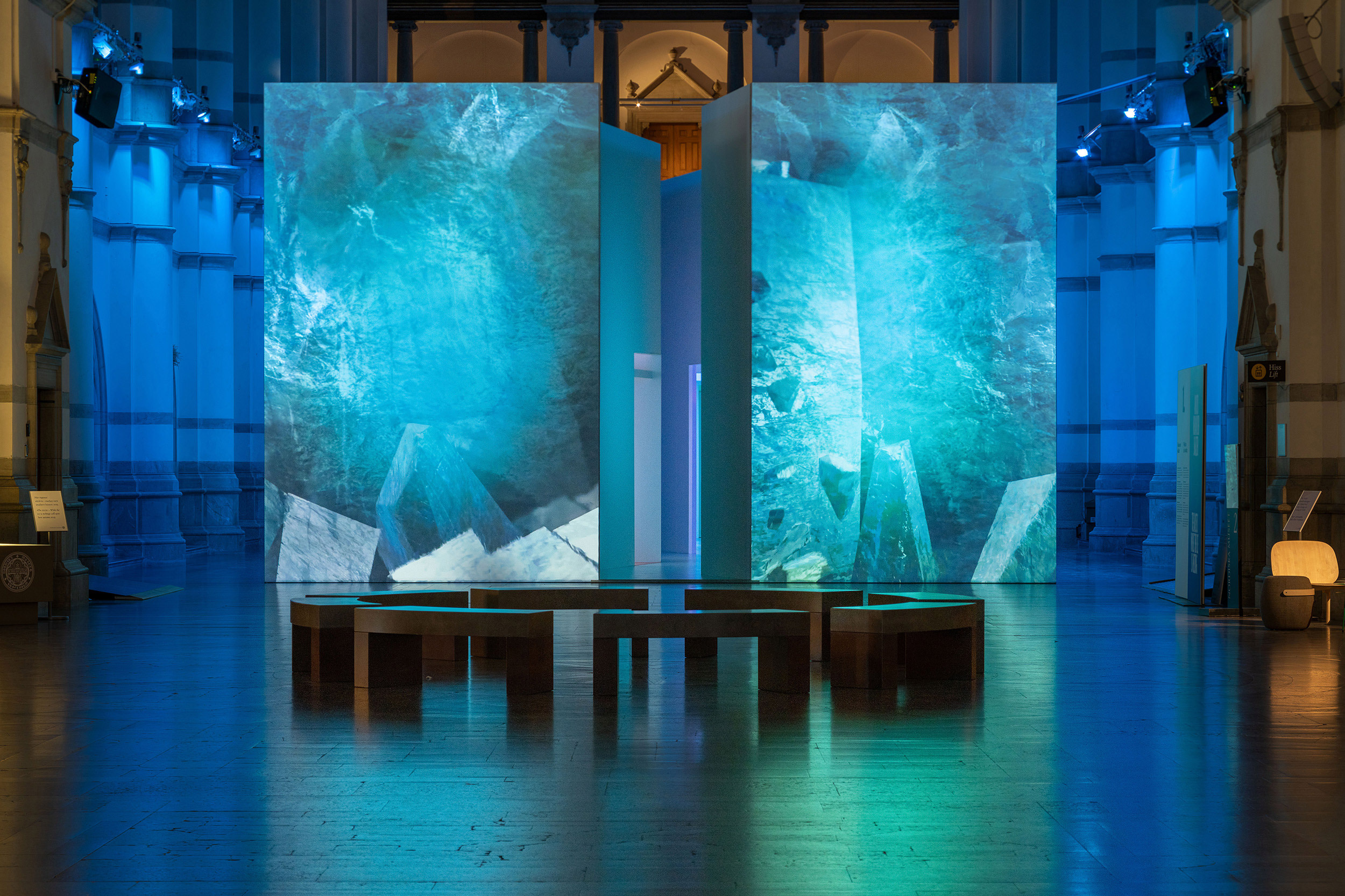
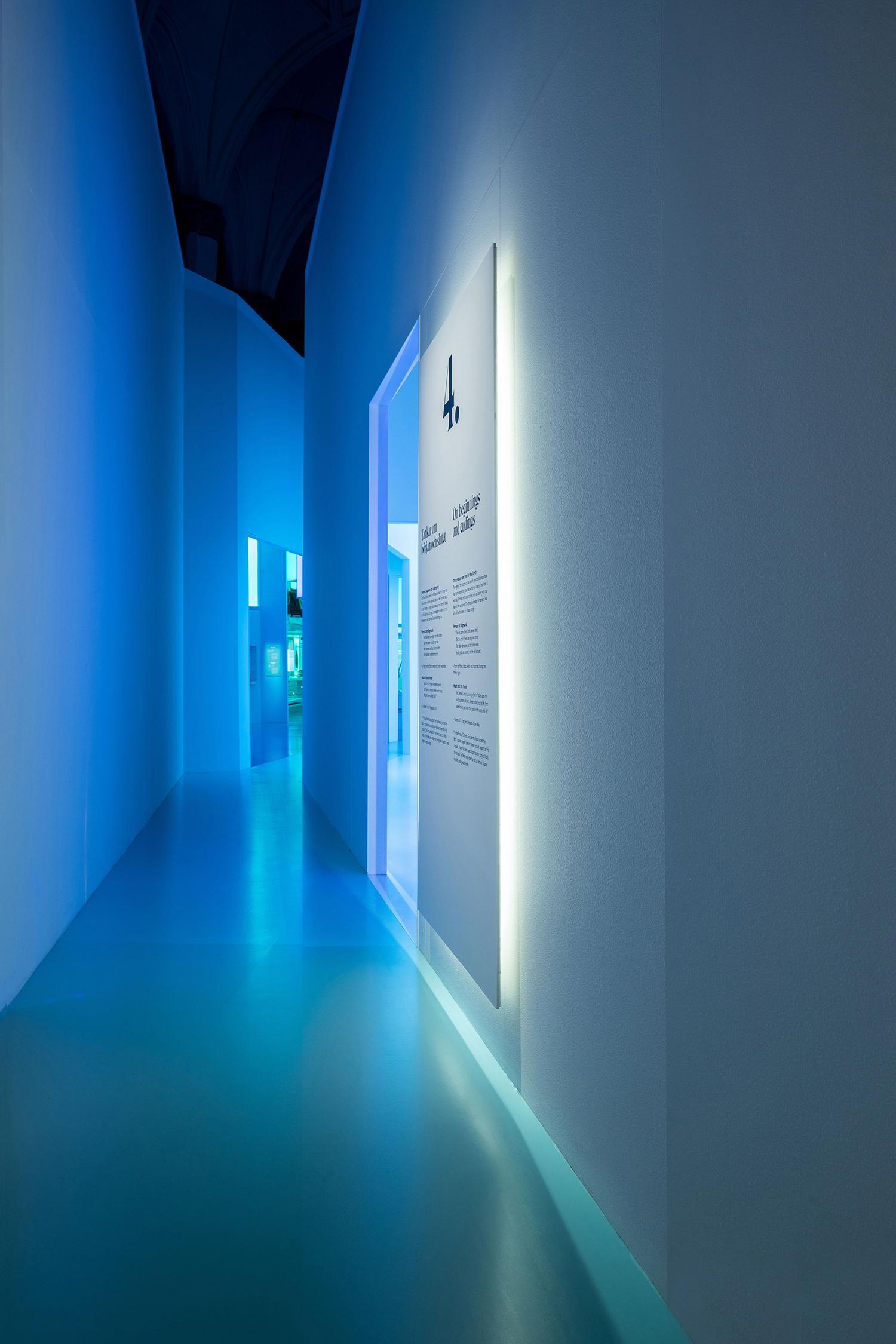


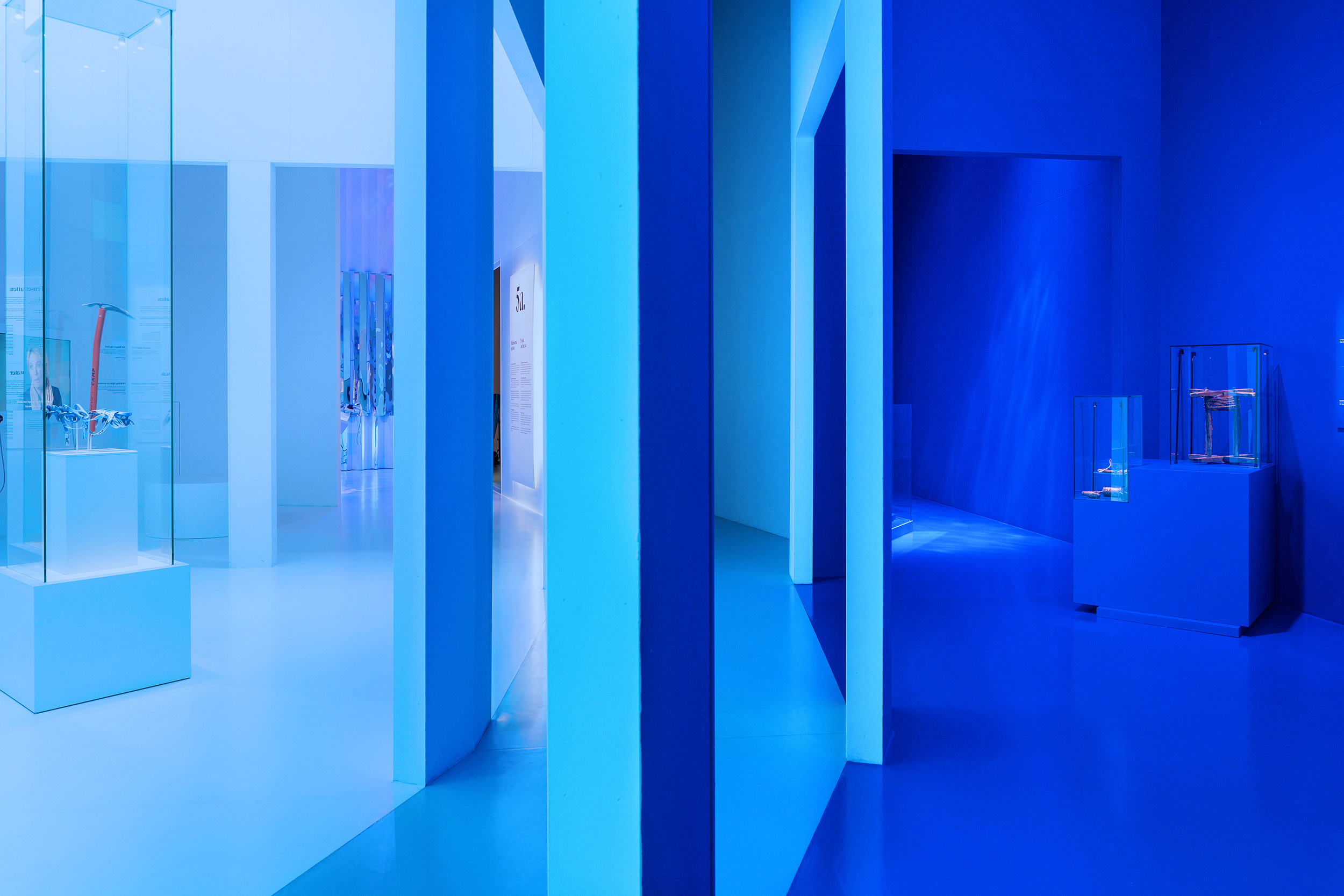

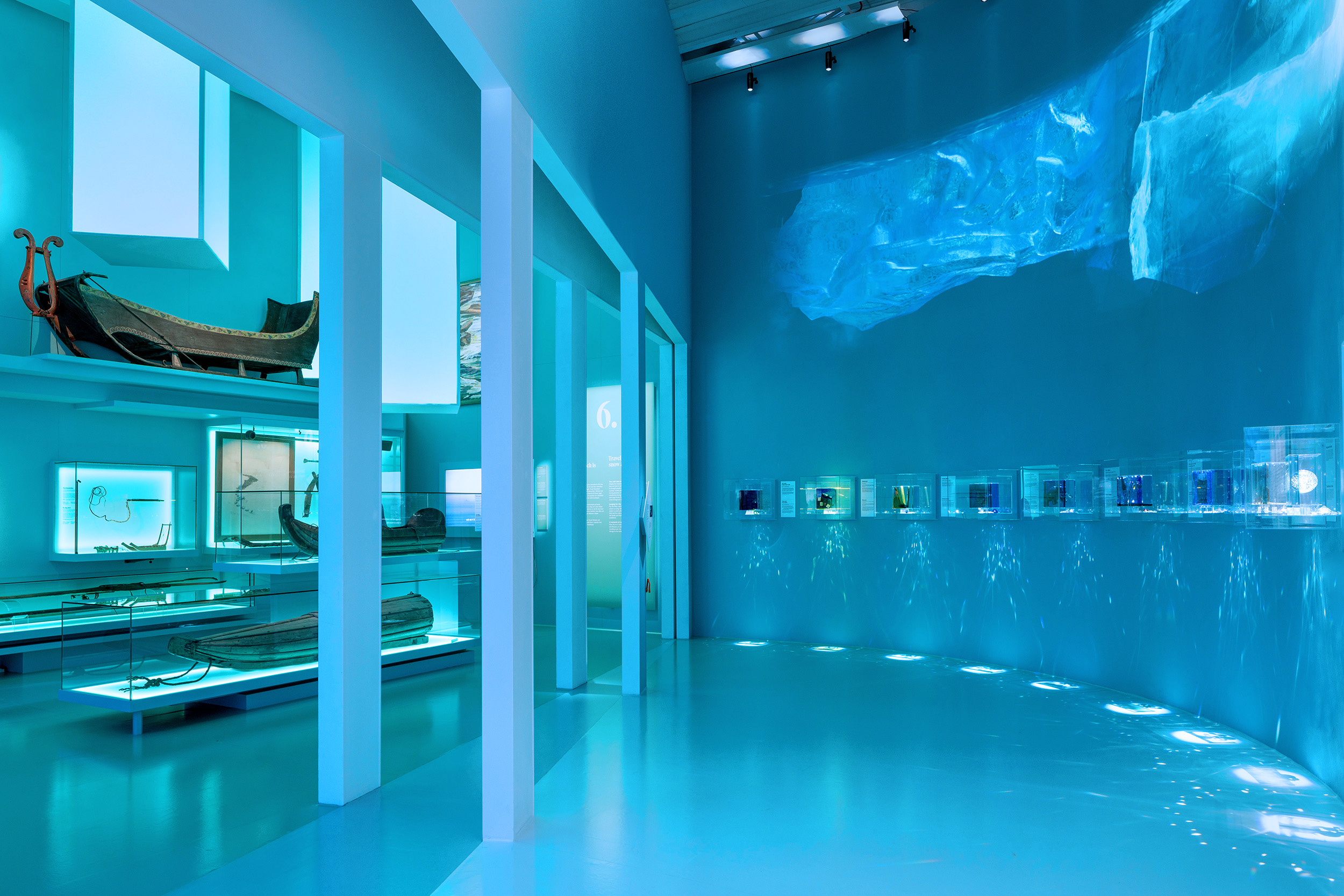
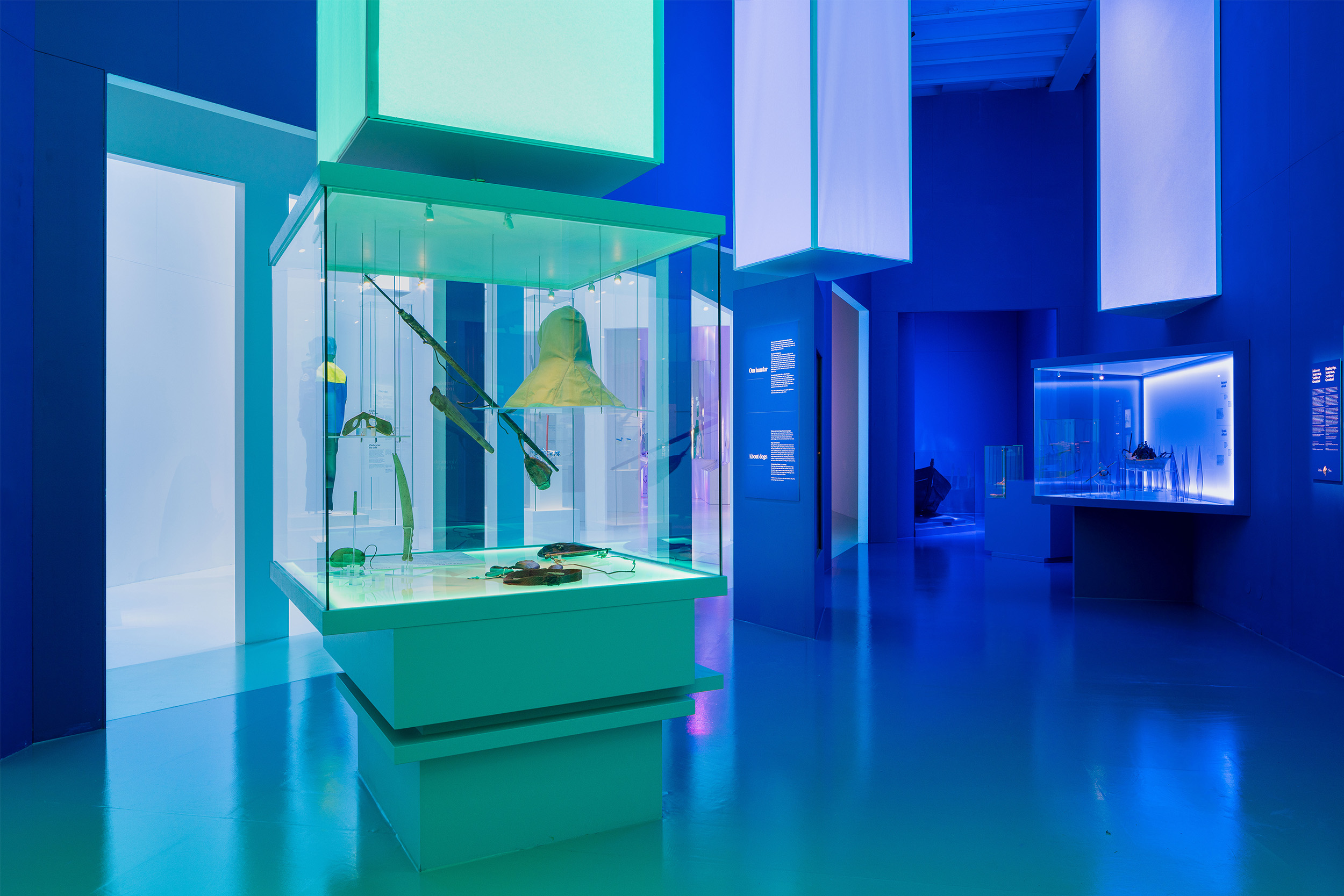
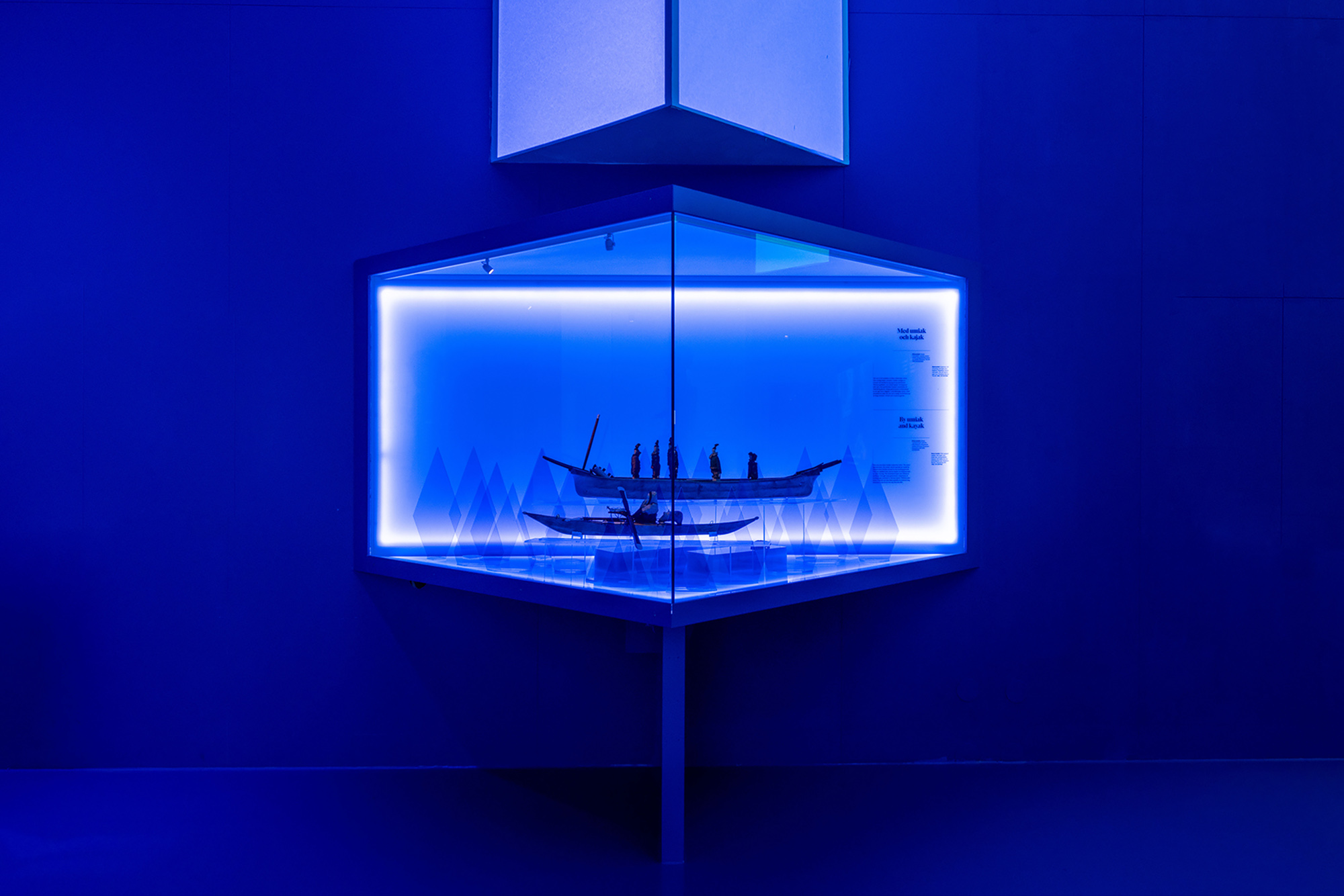

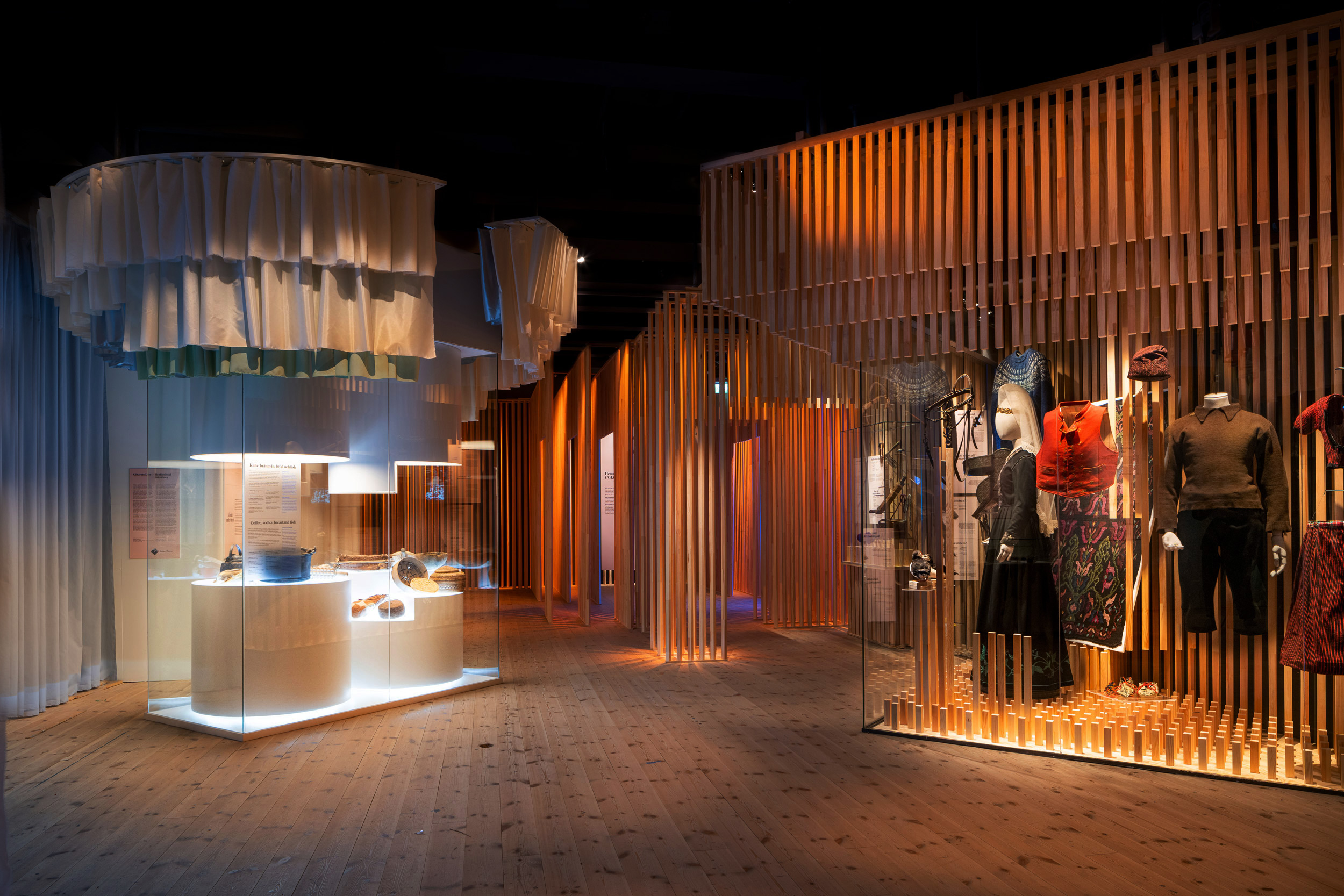
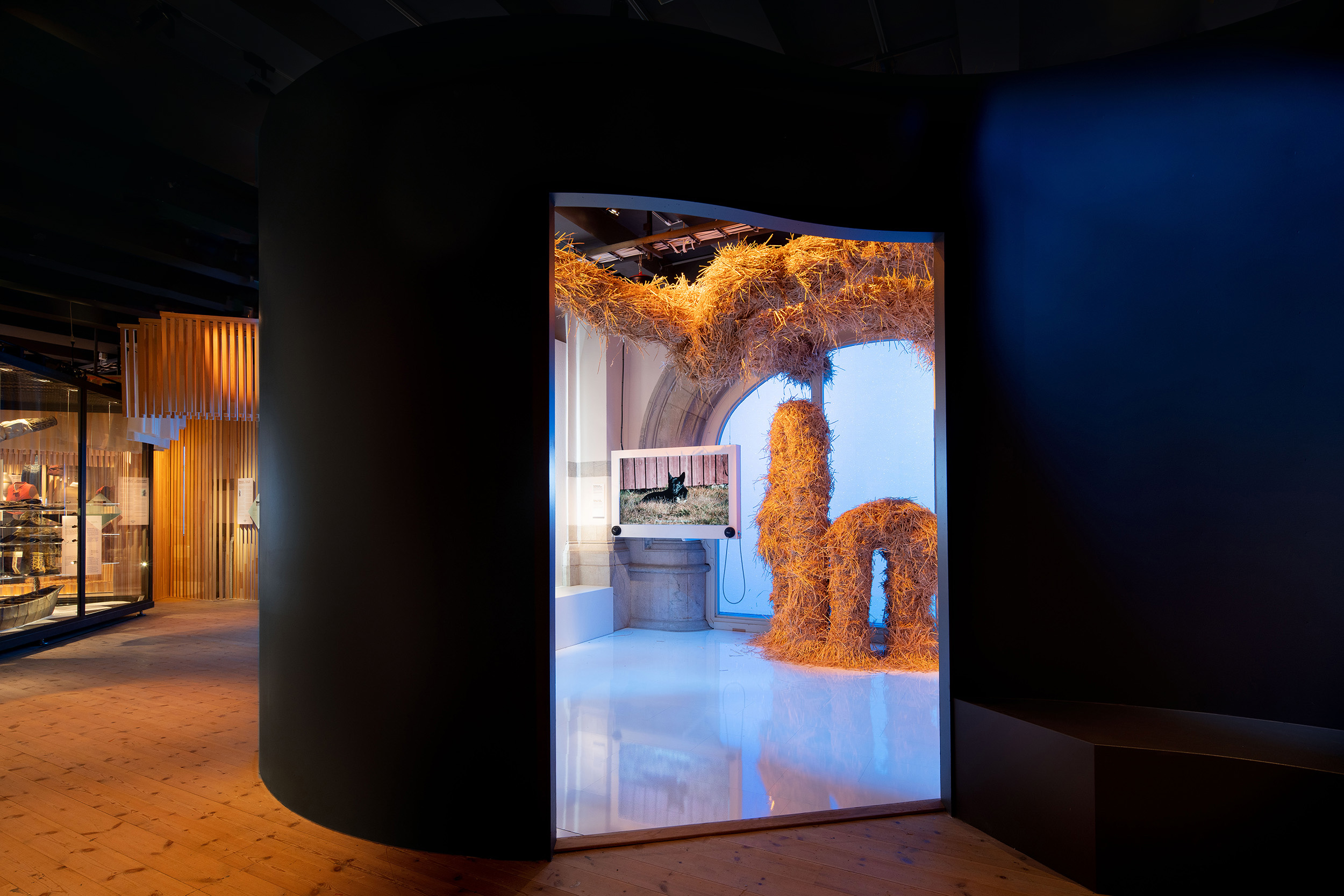
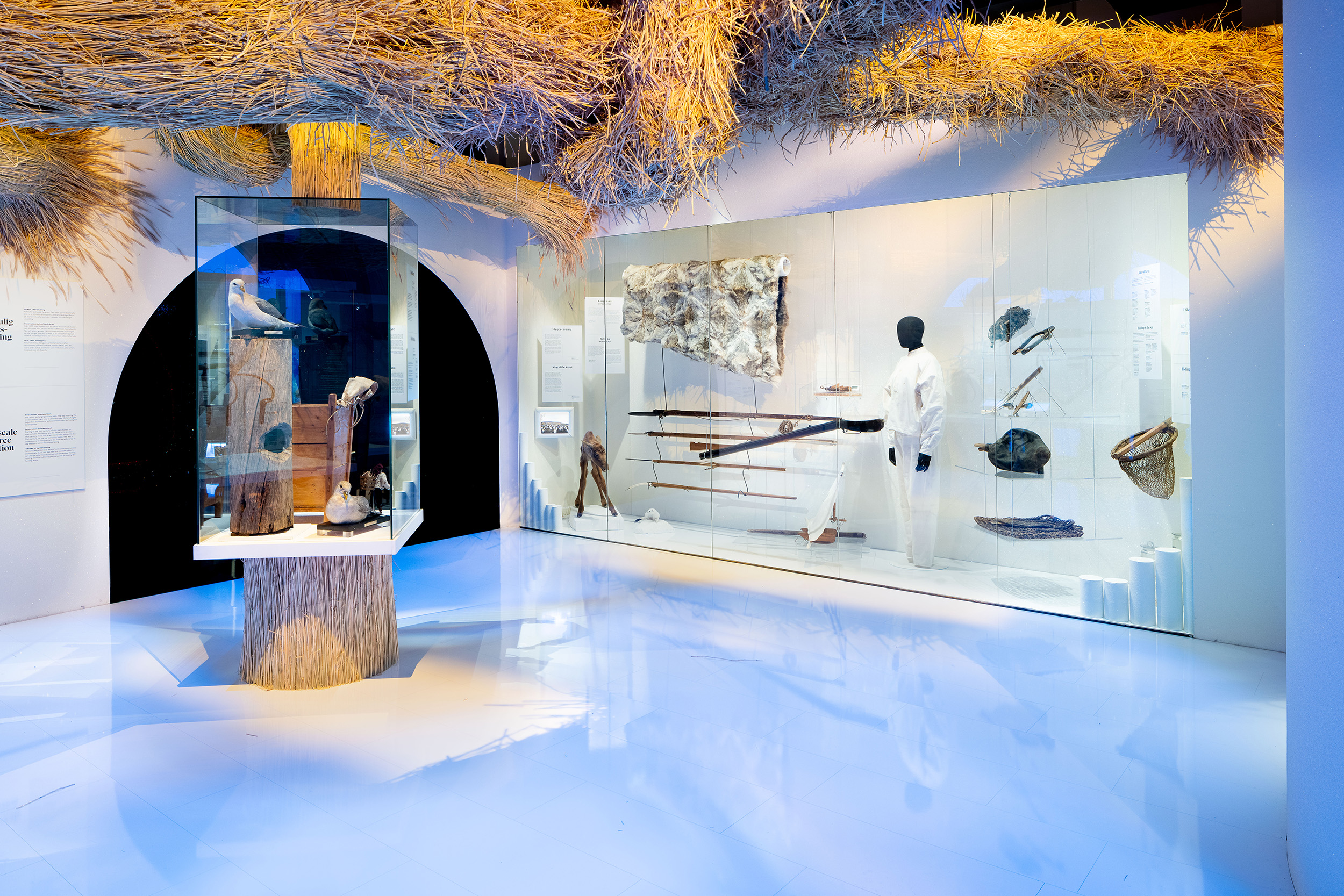
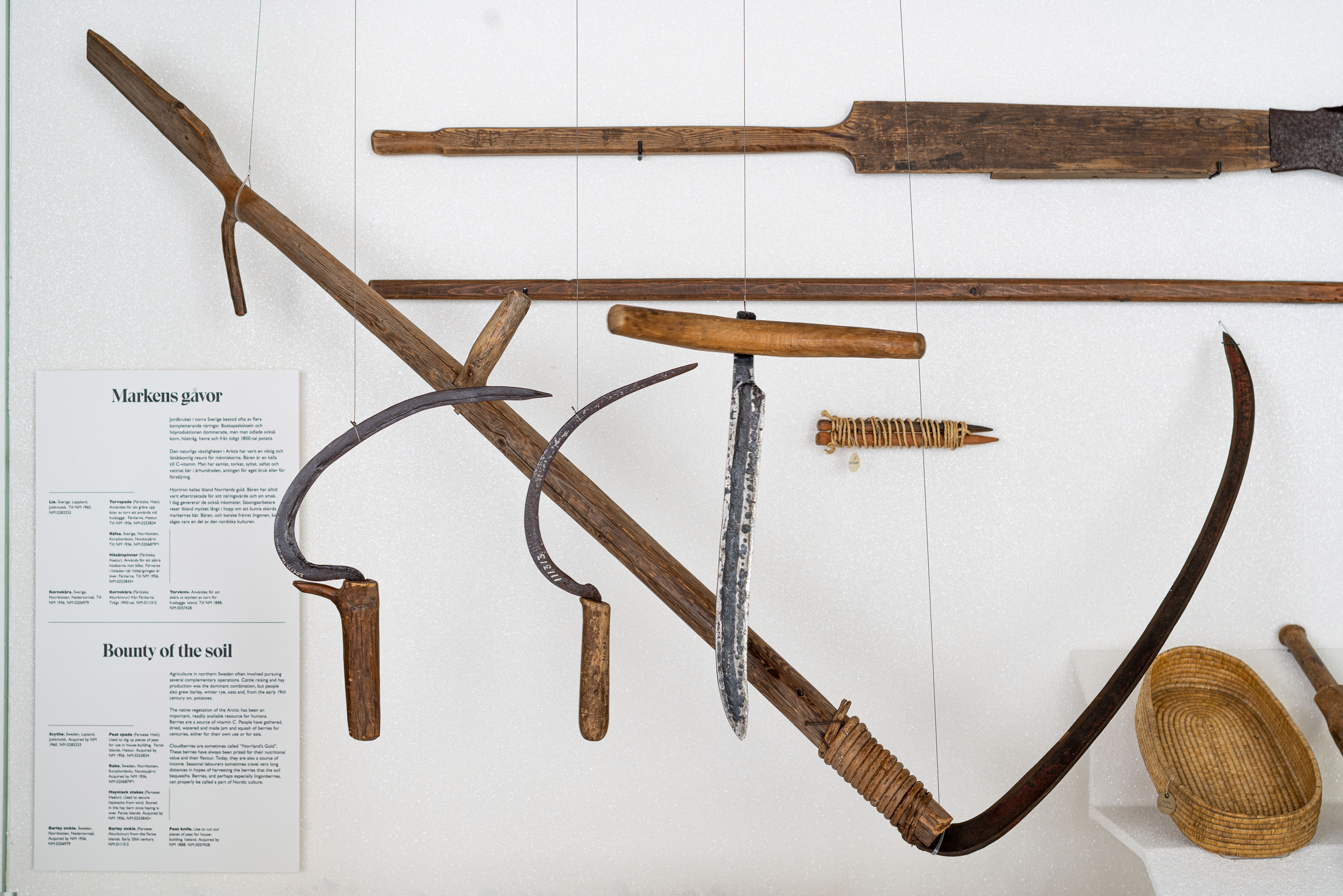

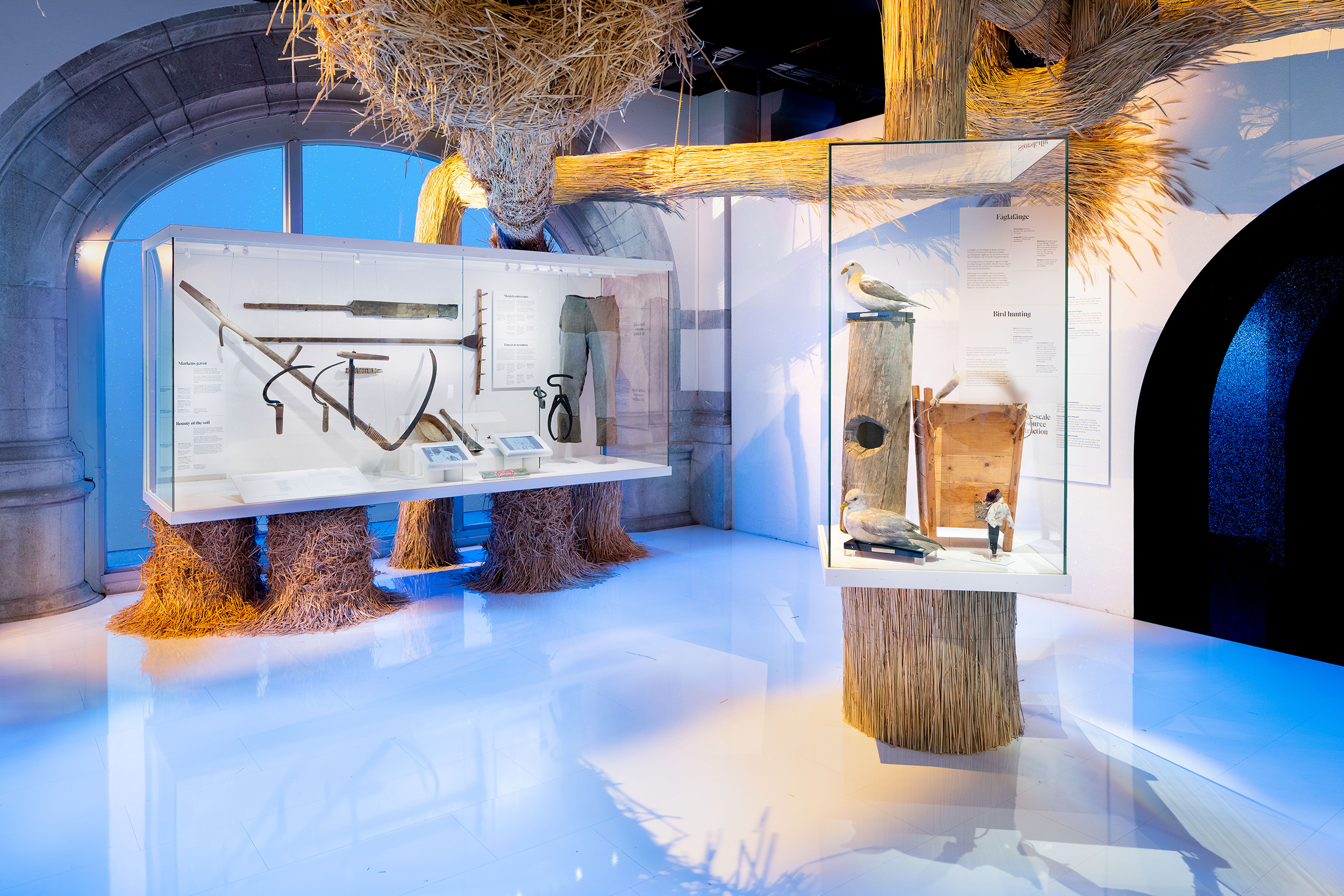
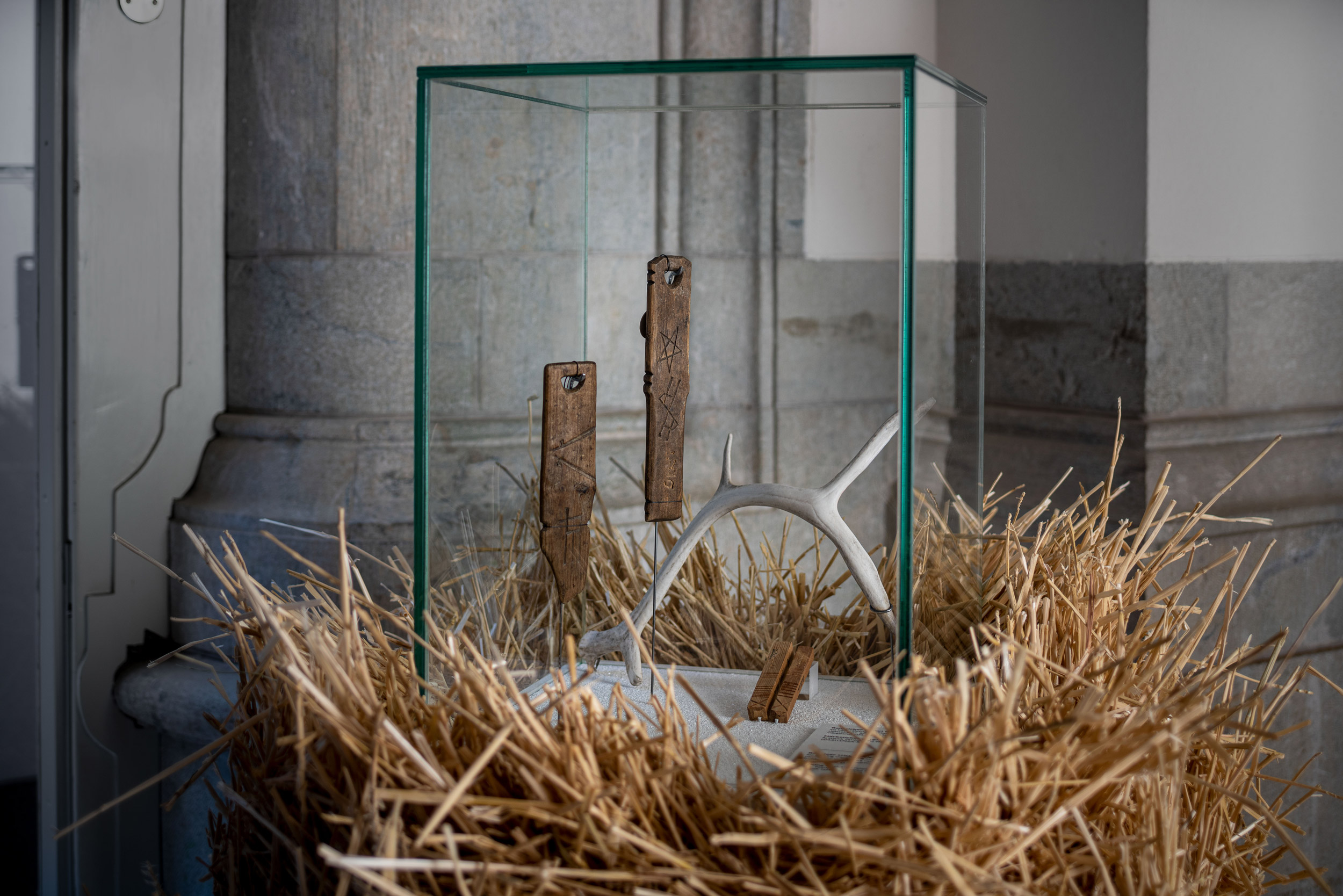
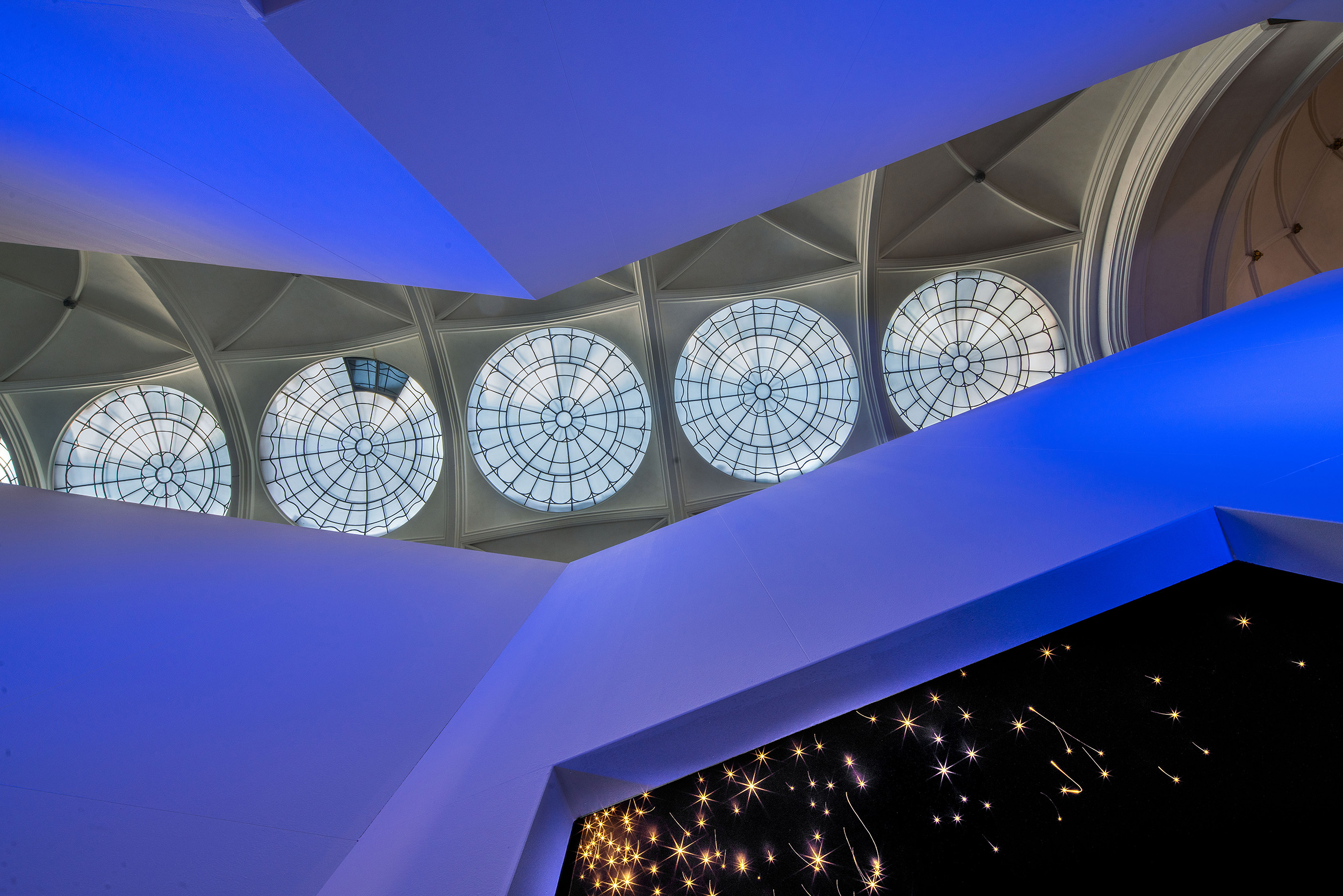

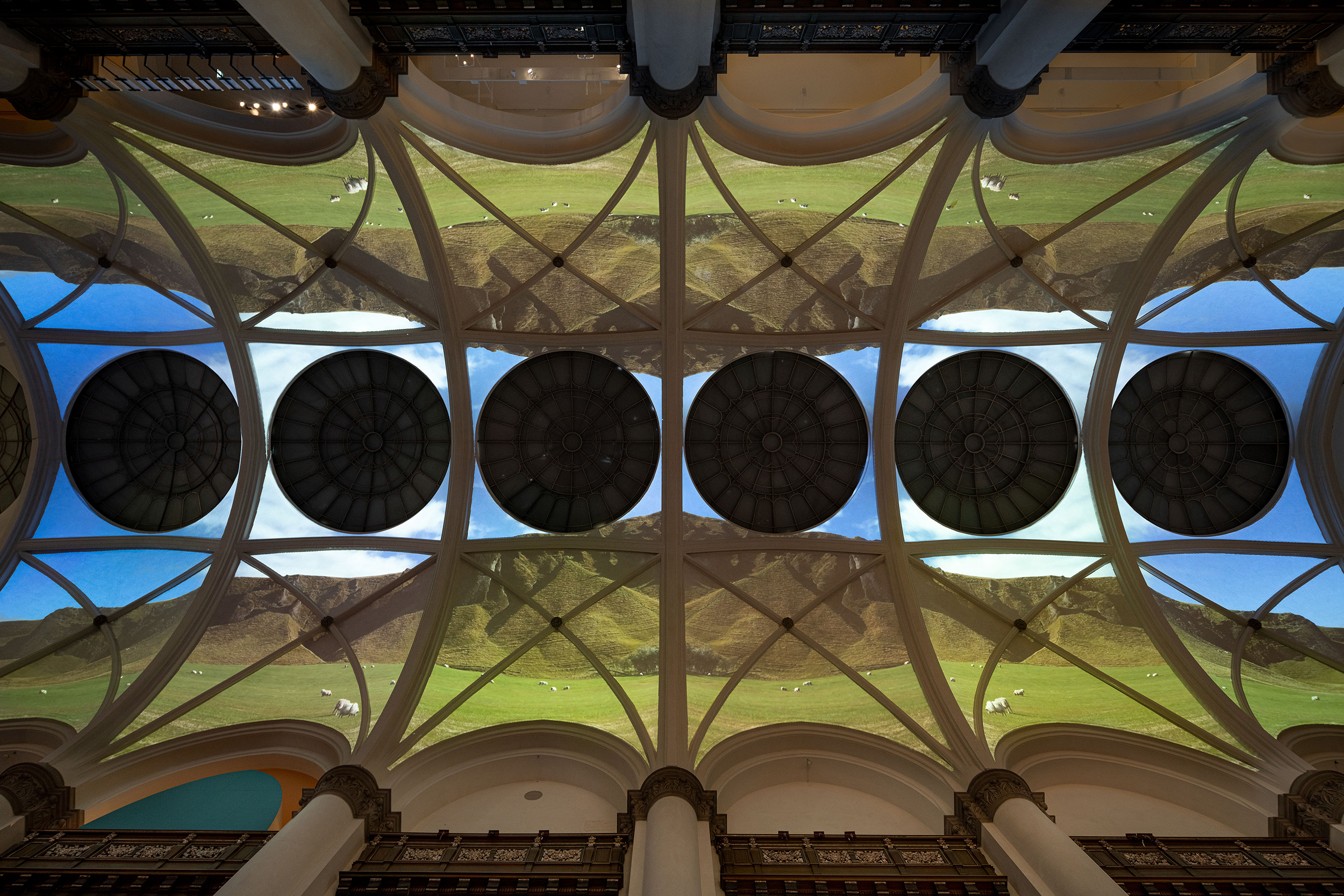
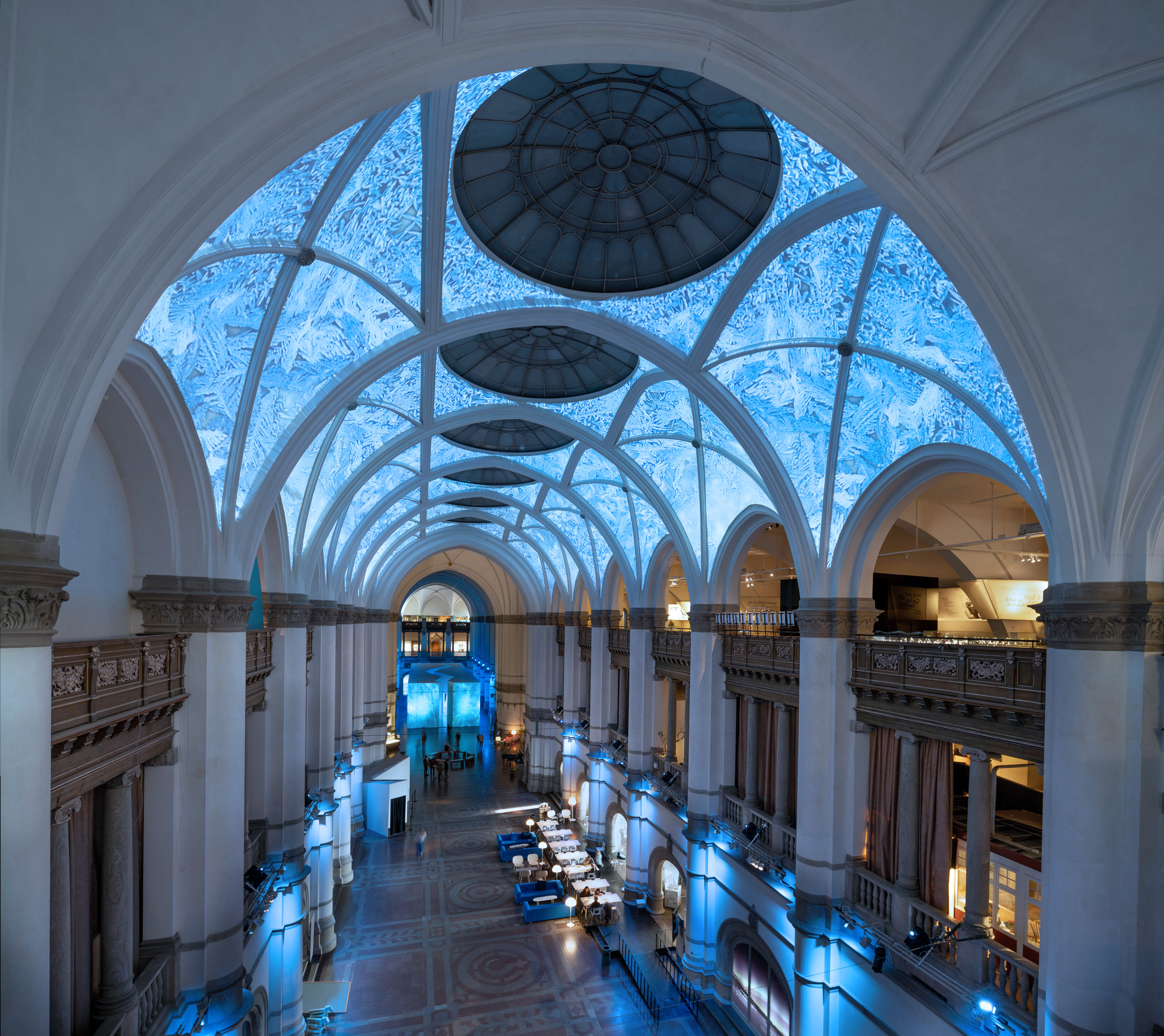

Design concept
The exhibition design concept centres on cracks. Cracks affect the Arctic in many ways. As temperatures rise, ice melts, and large cracks occur. Enormous cracks that force icebergs to loosen.
Cracks also have a symbolic meaning, illustrating past and present. With the climate crisis, cracks arise between nature, traditions and generations.
When the ice melts, people can reach previously inaccessible natural resources. A crack exists between those who protect the environment and those who want to exploit it for financial gain. With expanding industrialisation, new people come to the Arctic.
At the same time, cracks can bring about a tremendous positive force. Cracks cannot be ignored. They can make people listen and communicate, regardless of their origin or history. People can work together and heal cracks, and together, succeed in creating a new life, with new solutions.
Cracks in the ice
The visitor is met by a monumental block of ice that calves. It is split by a giant crack, through which, visitors can follow the meltwater into the exhibition.
Inside the ice block, the visitor experiences the Arctic. Objects, accounts, films, slideshows, webcams and art weave together present and past, science and mythology, into a poetic and multifaceted story about the history and future of ice and the everyday lives of the people in the Arctic.
The visitor moves from hard white ice, gradually transforming into light green and blue meltwater and eventually melting entirely into the dark deep blue sea.
Cracks occur between traditional and modern life. It impossible to reach the ice roads, people must find new ways. Instead of walking, or using sleighs and scooters, boats and helicopters become increasingly common.
Cracks in the home
Due to climate change, people find it increasingly difficult to live in static houses made of wood or concrete. Here, traditional tents can be seen as more stable as the thawing permafrost can cause the soil to crack and ground to give way. In the Arctic, wood has historically been a very precious material as it could only be obtained as driftwood or imported from abroad.
Large textiles characterise the tent areas. Here, inspiration comes from the round forms of the Arctic tents. In contrast, the section of the exhibition with static houses is built of wood and is inspired by the triangular rooflines in Iceland, the Faroe Islands, Greenland and Siberia.
Cracks between people and their resources
Cracks arise in how people relate to resources and the environment. Between the small-scale more circular way of life, where everything is valued and there is very little waste, and the large-scale industrial methods of extracting natural resources.
The gallery is constructed using organic local materials such as hay to resonate with the more circular way of life.
In the last part of the exhibition, which concerns large-scale resource extraction, the visitor enters a section of a huge oil pipe.
Credits
Exhibition design: Serge Martynov, Sofia Hedman/MUSEEA
Graphic design: Serge Martynov, Sofia Hedman/MUSEEA
Cross stitch and bead sculptures: Anastasya Martynova/MUSEEA
Hay sculptures: Anastasya Martynova, Serge Martynov, Sofia Hedman/MUSEEA
Concept for exhibition design: Serge Martynov, Sofia Hedman, Anna-Klara Mehlich/MUSEEA
Future area design: Nordiska Museet
Project manager: Elna Nord
Producer: Matti Shevchenko Sandin
Producers assistant’s: Hanna Leijon, Jon Johansson
Research leadership: Lotten Gustafsson Reinius
Construction: John Christie
Documentary films and photography: Camilla Andersen
Exhibition projections: David Giese
Ceiling projection: Jesper Wachtmeister
Text processing: Johanna Jensen
Drone video: Karolina Kristensson/Nordiska Museet
Photography: Hendrik Zeitler
The exhibition design concept centres on cracks. Cracks affect the Arctic in many ways. As temperatures rise, ice melts, and large cracks occur. Enormous cracks that force icebergs to loosen.
Cracks also have a symbolic meaning, illustrating past and present. With the climate crisis, cracks arise between nature, traditions and generations.
When the ice melts, people can reach previously inaccessible natural resources. A crack exists between those who protect the environment and those who want to exploit it for financial gain. With expanding industrialisation, new people come to the Arctic.
At the same time, cracks can bring about a tremendous positive force. Cracks cannot be ignored. They can make people listen and communicate, regardless of their origin or history. People can work together and heal cracks, and together, succeed in creating a new life, with new solutions.
Cracks in the ice
The visitor is met by a monumental block of ice that calves. It is split by a giant crack, through which, visitors can follow the meltwater into the exhibition.
Inside the ice block, the visitor experiences the Arctic. Objects, accounts, films, slideshows, webcams and art weave together present and past, science and mythology, into a poetic and multifaceted story about the history and future of ice and the everyday lives of the people in the Arctic.
The visitor moves from hard white ice, gradually transforming into light green and blue meltwater and eventually melting entirely into the dark deep blue sea.
Cracks occur between traditional and modern life. It impossible to reach the ice roads, people must find new ways. Instead of walking, or using sleighs and scooters, boats and helicopters become increasingly common.
Cracks in the home
Due to climate change, people find it increasingly difficult to live in static houses made of wood or concrete. Here, traditional tents can be seen as more stable as the thawing permafrost can cause the soil to crack and ground to give way. In the Arctic, wood has historically been a very precious material as it could only be obtained as driftwood or imported from abroad.
Large textiles characterise the tent areas. Here, inspiration comes from the round forms of the Arctic tents. In contrast, the section of the exhibition with static houses is built of wood and is inspired by the triangular rooflines in Iceland, the Faroe Islands, Greenland and Siberia.
Cracks between people and their resources
Cracks arise in how people relate to resources and the environment. Between the small-scale more circular way of life, where everything is valued and there is very little waste, and the large-scale industrial methods of extracting natural resources.
The gallery is constructed using organic local materials such as hay to resonate with the more circular way of life.
In the last part of the exhibition, which concerns large-scale resource extraction, the visitor enters a section of a huge oil pipe.
Credits
Exhibition design: Serge Martynov, Sofia Hedman/MUSEEA
Graphic design: Serge Martynov, Sofia Hedman/MUSEEA
Cross stitch and bead sculptures: Anastasya Martynova/MUSEEA
Hay sculptures: Anastasya Martynova, Serge Martynov, Sofia Hedman/MUSEEA
Concept for exhibition design: Serge Martynov, Sofia Hedman, Anna-Klara Mehlich/MUSEEA
Future area design: Nordiska Museet
Project manager: Elna Nord
Producer: Matti Shevchenko Sandin
Producers assistant’s: Hanna Leijon, Jon Johansson
Research leadership: Lotten Gustafsson Reinius
Construction: John Christie
Documentary films and photography: Camilla Andersen
Exhibition projections: David Giese
Ceiling projection: Jesper Wachtmeister
Text processing: Johanna Jensen
Drone video: Karolina Kristensson/Nordiska Museet
Photography: Hendrik Zeitler
